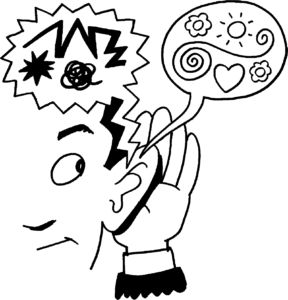
I wrestled with a computer manufacturer about a technical issue that required a simple solution. During the process, I made suggestions on how the company could improve customer experience and its procedures.
Time dragged on and messages accumulated back and forth. After several weeks, I was eager to get the whole thing over and done. Finally, the company’s Customer Advocate made an appropriate offer of action and compensation and asked me, “Will this settle the case?”
I listened to his language and sighed. This company just didn’t get it. Employees didn’t understand the need to improve language to improve customer experience.
Listen to the language: “Will this settle the case?”
Does this sound like a customer-friendly organization taking care of an inconvenienced customer? Or is this a law firm, a police blotter, an insurance company settling a claim?
“Settle the case” means to put it down, stop the dialog, end further communication. It certainly doesn’t sound like they want my future orders.
This company is not alone in its need to improve customer experience. I’ve been teaching another computer maker how to increase loyalty while responding to customer complaints. This company is committed to setting things right, and fast! They track exactly how long it takes to effectively “close the case.”
But again, listen to the language: “How quickly can we close this case?”
“Closing the case” means to shut the door, turn away and focus on something (or someone) else.
If you are a customer do you want your “case closed?” Or do you want your problems resolved, your concerns addressed, your discomfort carefully attended?
“Will this close the case?” or “Will this completely resolve your concerns?”
Which approach would bring you back? Which would boost your confidence, loyalty, repeat business and positive word of mouth? You choose.
Listen carefully to the language used inside your company. Do you hear commitment to a great customer experience, or compliance with company procedures? Or, do you need to improve customer experience?
“Handling customer complaints” or “Responding to customer concerns?” You choose.
“Your application is being processed” or “Your account will be opened soon?” You choose.
Which department do you want working on your behalf: “Customer Affairs,” “Customer Service” or “Customer Care?” You choose.
Key Learning Point To Improve Customer Experience
Language shapes and reveals the mindset of your team. If your customers are “handled,” “processed,” “settled” and “closed,” you may not hear from them again. But if your customers (and staff) receive “care,” “response,” “service” and “support,” they are likely to return with enthusiasm, testimonials and new business. Addressing language is a great way to improve customer experience.
Action Steps To Improve Customer Experience
Conduct an audit of your company’s terms, titles, jargon and language. Find every instance where customers have been degraded to “cases” and concerns have been reduced to “complaints.”. To improve customer experience, invent another way to speak about the people you serve, the promises you make and the experiences you create.
Make your language sound sweet, sensitive and sincere to improve customer experience. When taking care of human beings, it does make a difference to improve customer experience.
—————————————————————————————————————————–
You may use this article in your free newsletter, website or publication providing you include this complete statement (below) with active links to the websites:
Copyright, Ron Kaufman. Used with permission. Ron Kaufman is the world’s leading educator and motivator for upgrading customer service and uplifting service culture. He is author of the bestselling “Uplifting Service” book and founder of Uplifting Service. To enjoy more customer service training and service culture articles, visit www.RonKaufman.com.
For commercial use of this article in a paid newsletter, publication, or training program, please contact us.



